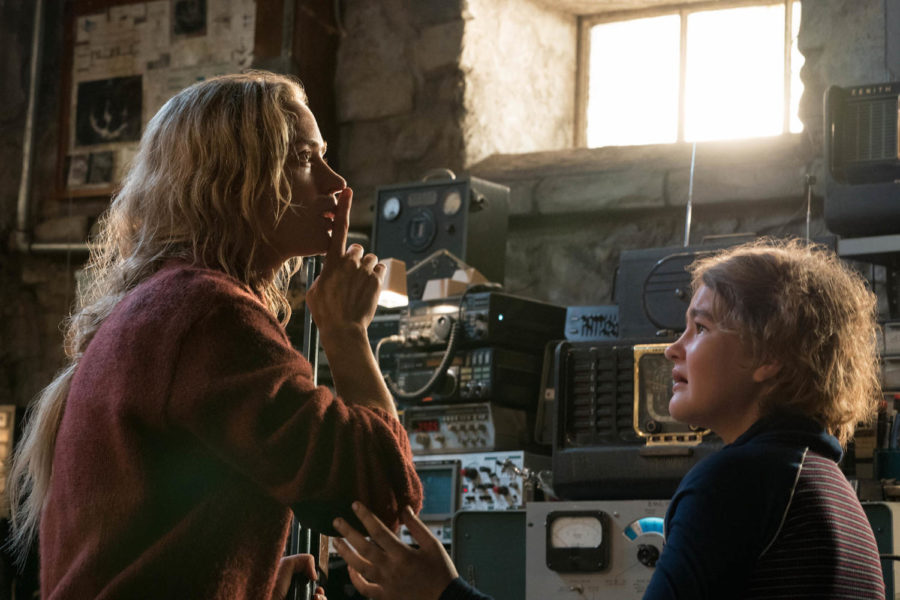‘A Quiet Place’ makes a lot of noise in Hollywood
Horror fans know of a few classic scenes. In “Psycho,” there’s the famous shower scene where the killer stabs the vulnerable woman while she screams at the top of her lungs. There’s the scene in “Alien,” where the alien bursts out of John Hurst’s chest while all his comrades stand and scream in utter terror. The moment in “The Shining” when Jack chases his wife, tearing apart a door that is protecting her while she curls up in the corner screaming bloody murder. All the most iconic horror movie scenes contain loud outbursts of screaming and terror, but not in “A Quiet Place.”
“A Quiet Place” was released April 6, grossing over $50 million within just the first weekend, a measly 3 days. It was the highest grossing movie of its weekend, proving to be highly popular among audience members for its innovative approach to the horror genre.
The plot of the movie is driven by sound, or more specifically, the inability to make any sounds. Throughout the movie, the family’s daily life is focused on their survival and making as little noise as possible. They constantly go out of their way to stay silent, communicating through sign language and laying down sand to walk on. It is this very concept that makes this movie so unique as almost every horror movie created is centered around the eerie noises and screams to scare the audience members. In my opinion, the lack of sound makes the movie scarier than any other, leaving the audience on edge and more prone to hear and react to the screams of the other people within the audience.
An interesting aspect of the movie is that since there is no dialogue, the movie relies on visual cues to insight tension within the viewers. In scenes where there’s an expectation of an auditory cue, like a timer about to go off or a nail exposed in the ground, we see a shot of that image. This builds tension unlike any movie, as the audience expects some sort of auditory response yet are unaware of its volume or effect upon the plot. When the mother steps on the nail we expect a scream or when the timer ends we expect an alarm sound, but since no sound can be made by the family, the audience sits on edge, anticipating the horror that may follow if the aliens hear them. These selective camera shots throughout the movie explore a new way to incite fear and anxiety within viewers, not relying on the screams and shouts like other horror movies.
Not only is the production of “A Quiet Place” so progressive and different than most any other movies, one cast member makes the movie even more progressive. Millicent Simmonds, who plays the daughter Regan, is deaf in the movie, driving a majority of the plot, as her inability to hear has been a burden upon the family. But it isn’t her deafness in the movie that is so different, it is her actual deafness in real life. Think of any movie that has a deaf actor in it; it’s nearly impossible. The visibility of the deaf community in Hollywood has nearly been nonexistent, showing no representation for a large population within this world. Not to mention, most movie theaters don’t have wide accommodations for the hearing impaired. This movie, though, is inclusive as not only a deaf character is actually played by a deaf actor, but the lack of dialogue and visibility of sign language allows hearing impaired people to go see a movie in a theater without having to worry too much about whether or not they can publicly enjoy a movie.
“A Quiet Place” is a game-changer, for it not only provides a new storytelling concept to convey fear and horror, but it also provides a representation that no other movie has truly grasped. Yes, the movie is chilling and does its job as a scary movie, but that’s not what is important about it. What is important is its uniqueness and ability to incorporate a community not represented enough in high production media and films.
by CAMERYN OAKES








